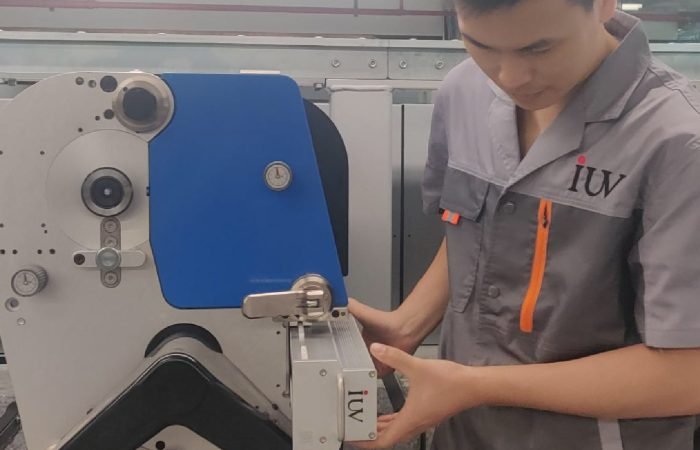In food packaging, safety isn’t just a buzzword—it’s non-negotiable. UV curing flexo printing has emerged as a game-changer for manufacturers needing low migration inks that stay put. Unlike traditional methods, this technology locks ink components into place, eliminating risks of chemical transfer to food products. Let’s unpack how this synergy works and why it’s reshaping packaging standards.
Low migration inks demand precision. Their formulation minimizes volatile organic compounds (VOCs) and photoinitiators that could leach into packaged goods. But ink chemistry alone isn’t enough. Curing methods determine whether these inks perform as intended. Enter UV-LED curing systems. By emitting specific wavelengths, they trigger instant polymerization, transforming liquid ink into a solid film. This rapid process leaves no room for uncured residues—the primary culprits behind migration issues.
Flexo printing’s adaptability makes it ideal for food packaging runs. Whether printing on metallic films, recyclable substrates, or heat-sensitive materials, UV curing maintains dimensional stability. Narrow web presses benefit particularly from this setup. The instant curing halts dot gain, sharpening fine text and barcodes critical for compliance labeling. No drying ovens mean shorter web paths, reducing waste when handling thin films prone to stretching.
Compare this to conventional solvent-based flexo. Older systems rely on evaporation, leaving trace solvents that migrate over time. Even water-based inks, while safer, struggle with porous substrates like uncoated paper. UV flexo sidesteps these pitfalls entirely. Migration testing under EU 10/2011 and Swiss Ordinance standards consistently shows UV-cured inks outperforming alternatives in simulated real-world conditions.
But what about offset? While sheetfed offset delivers crisp graphics, its drying time creates bottlenecks for high-speed packaging lines. UV flexo runs at 200 meters/minute without compromising cure quality. For short runs—common in seasonal food packaging—quick job changeovers keep costs competitive. Hybrid configurations add even more flexibility. Imagine printing CMYK plus white and varnish in a single pass, all cured on-the-fly. That’s production efficiency meeting safety protocols head-on.
Material compatibility is another win. PET containers, polypropylene wraps, and even biodegradable films demand diverse adhesion profiles. UV-cured inks bond through surface modification rather than absorption. This creates a chemical anchor, preventing ink from “floating” atop non-porous substrates. Post-print tests reveal remarkable scratch resistance—critical when packaging ships through cold chain logistics.
Energy efficiency sweetens the deal. LED-UV systems consume 70% less power than mercury-vapor lamps. No warm-up time means instant readiness, slashing energy waste during idle periods. Printers report monthly savings that offset initial equipment investments within 18 months. Combine this with zero VOC emissions, and sustainability metrics improve across the board.
Still, implementation requires nuance. Ink viscosity must align with anilox volumes to maintain color consistency. Press operators need training to balance lamp intensity with line speed—too much UV exposure can over-cure inks, causing brittleness. The sweet spot? Matching spectral output to the ink’s photoinitiators. Newer LED arrays offer tunable wavelengths, letting technicians adjust for different ink batches without halting production.
Regulatory landscapes keep evolving. FDA and EFSA now scrutinize indirect food contact materials more aggressively. A 2023 study found UV-cured flexo inks reduced non-intentionally added substances (NIAS) by 89% compared to thermal-cured alternatives. This data matters for brands navigating global markets. When a snack company switched to UV flexo last year, their migration test costs dropped 40%—certification became faster, with fewer reformulation headaches.
The future points toward smarter integration. Imagine IoT-enabled curing stations that auto-adjust based on substrate thickness detected by inline sensors. Or bio-based photoinitiators derived from agricultural waste, closing the sustainability loop. As recyclable packaging gains traction, UV flexo’s ability to print on novel materials positions it as the backbone of safer food logistics.
From bottling plants to frozen food producers, the message is clear: pairing UV curing with flexo isn’t just about keeping inks in place. It’s about building consumer trust through every step of the supply chain. As materials science advances, this combination will keep setting benchmarks for what’s possible in responsible packaging.












